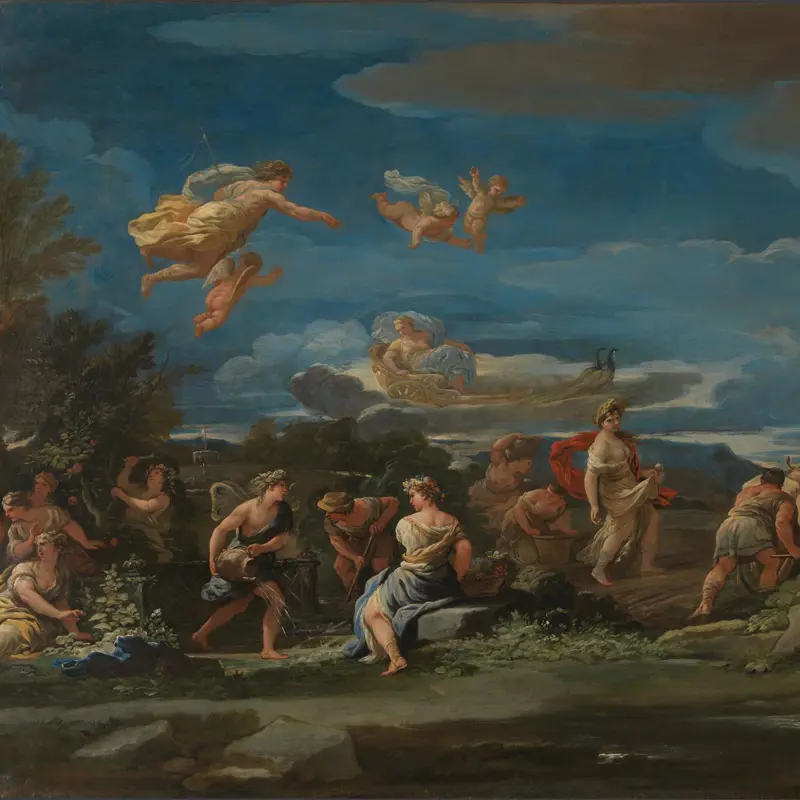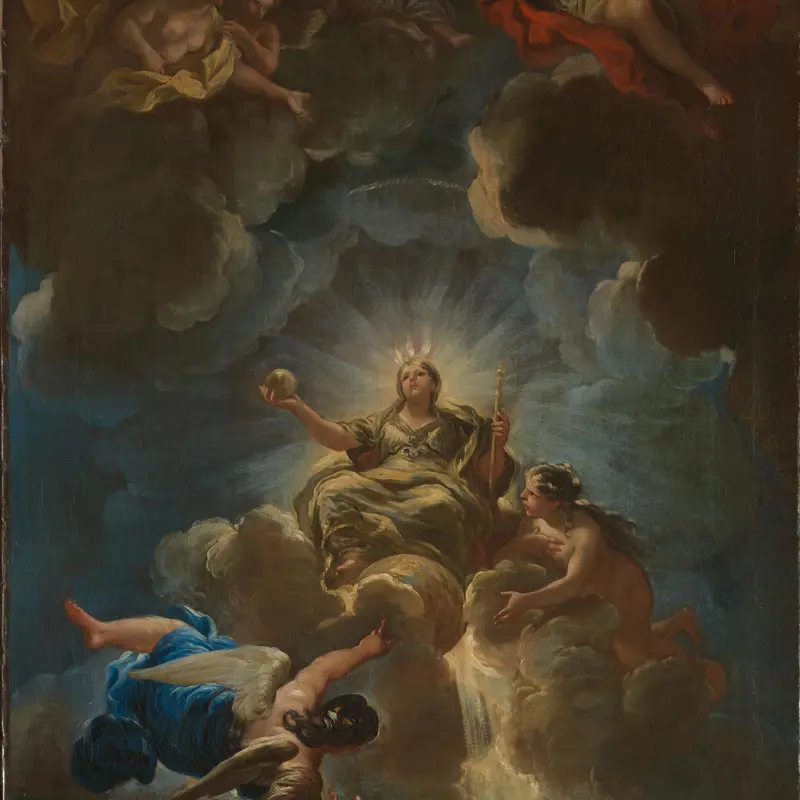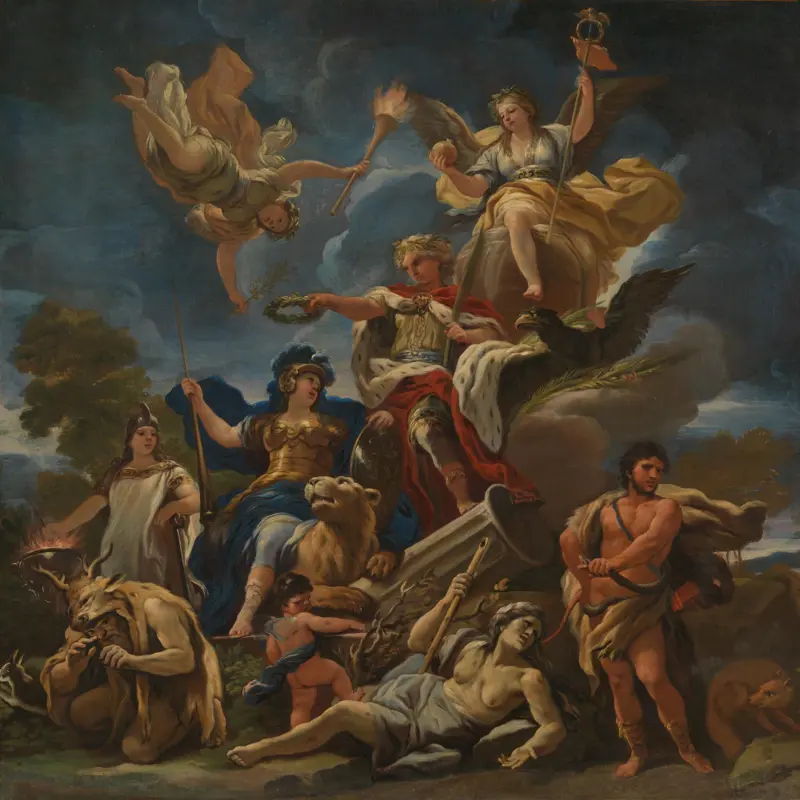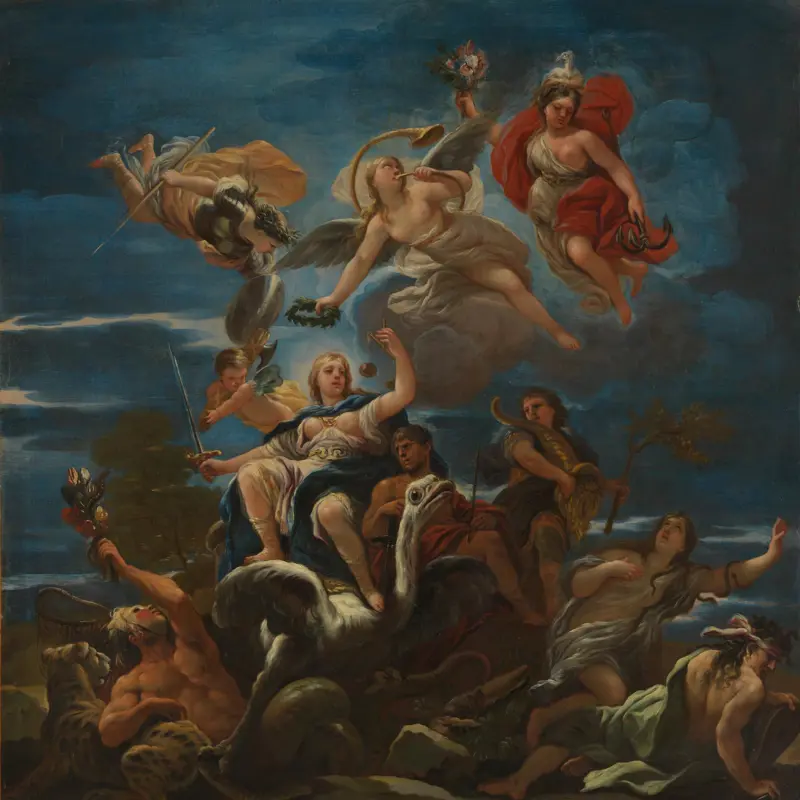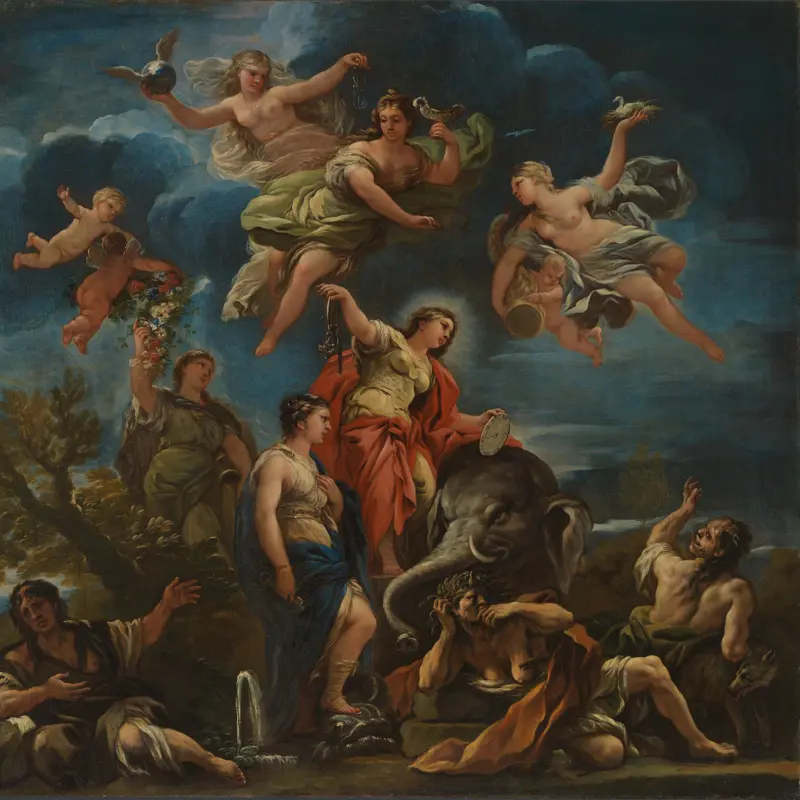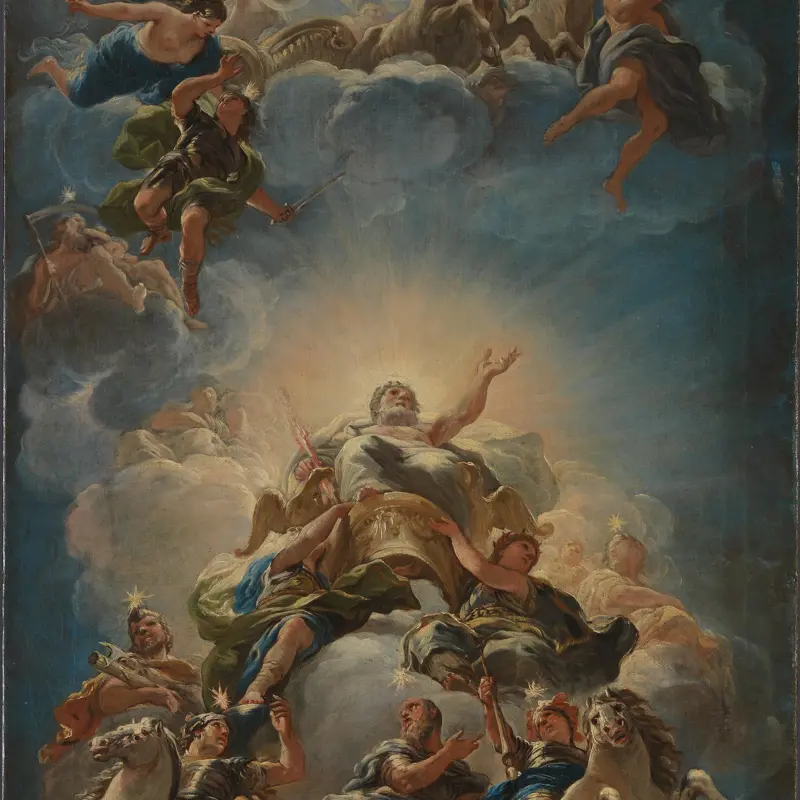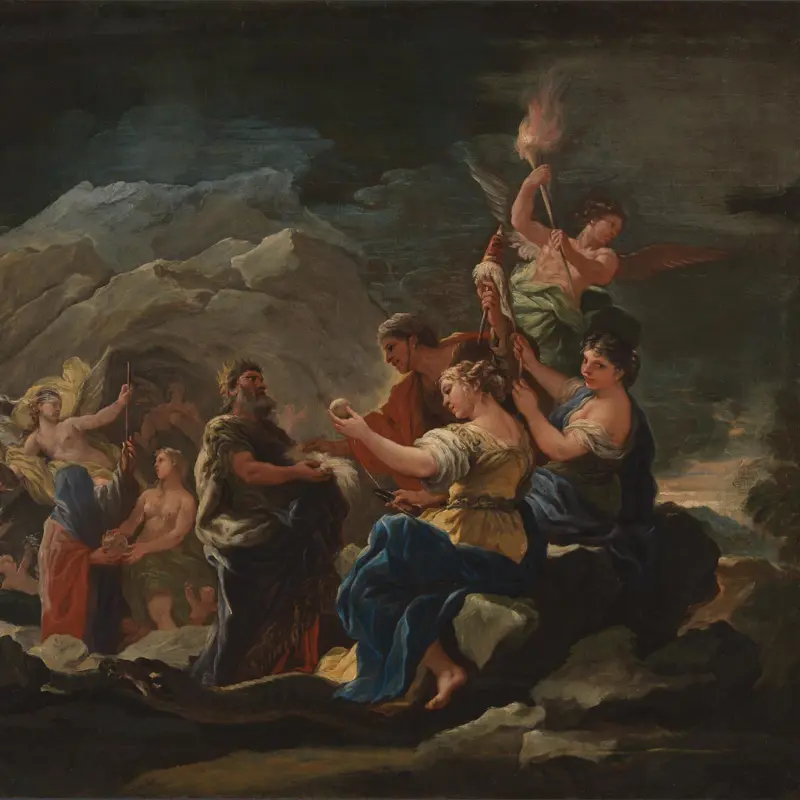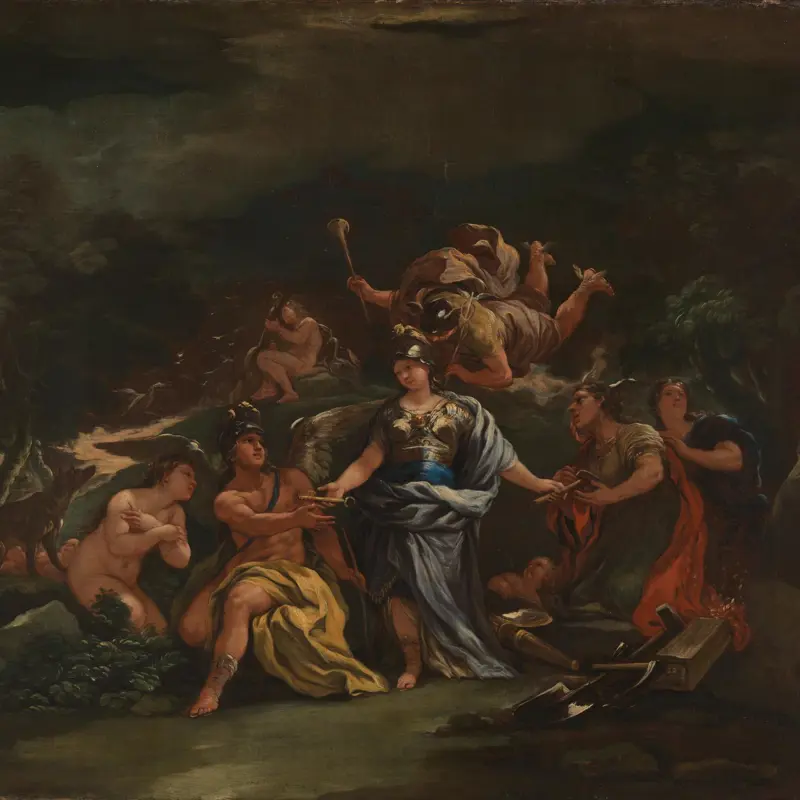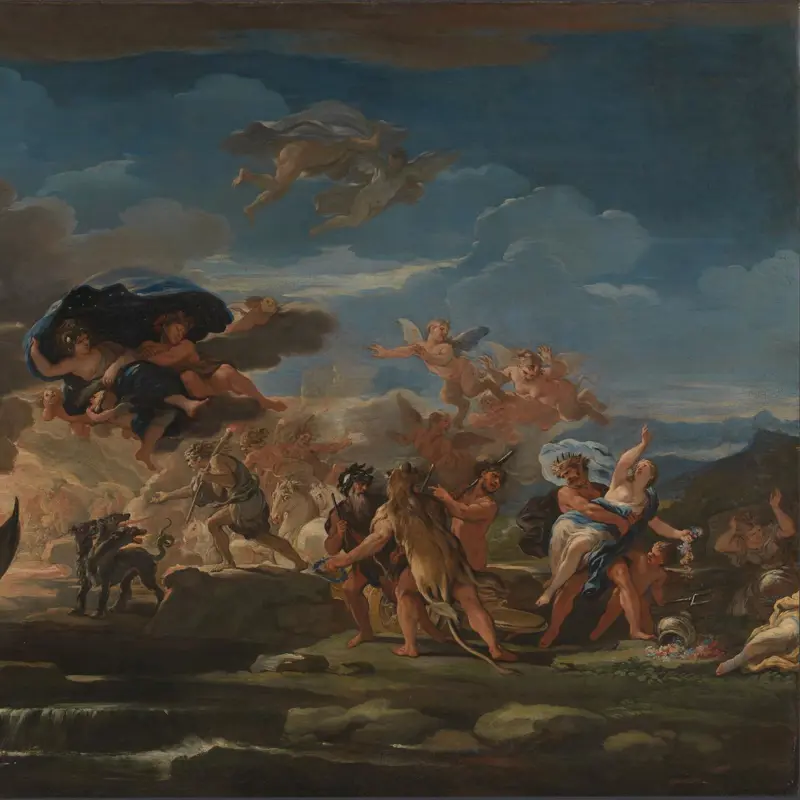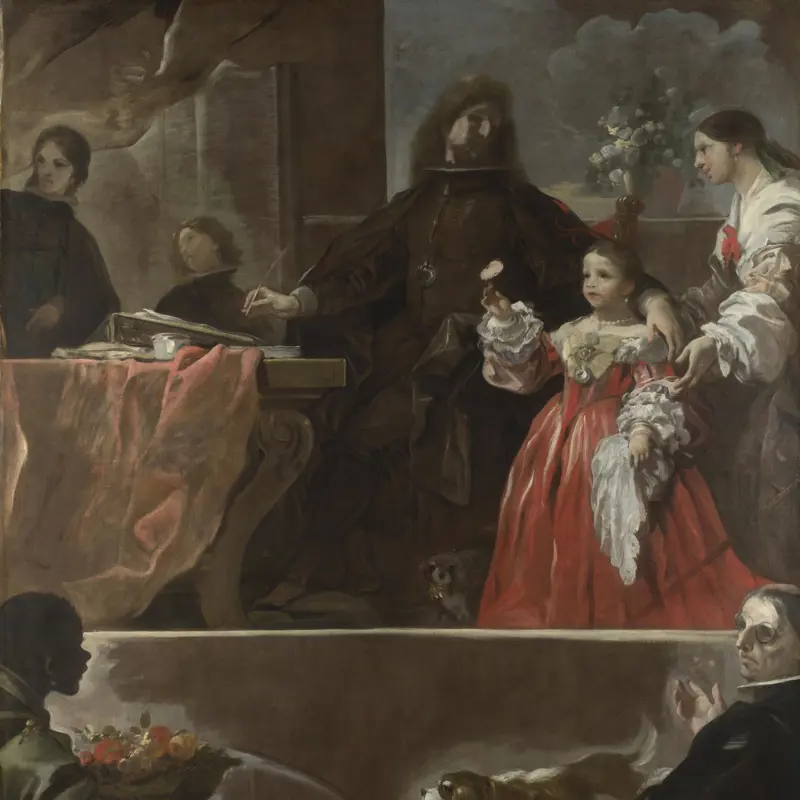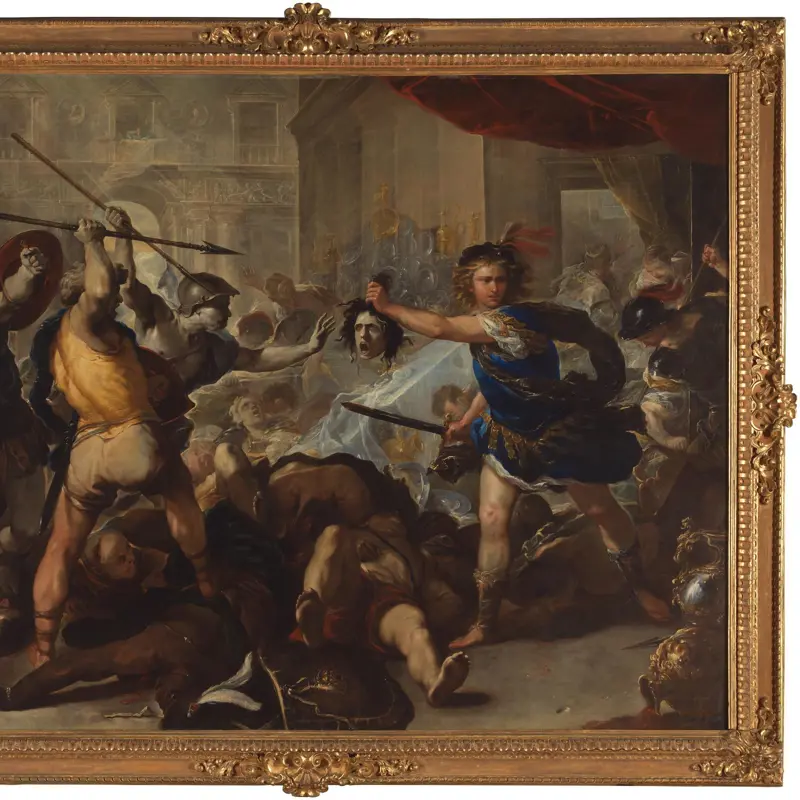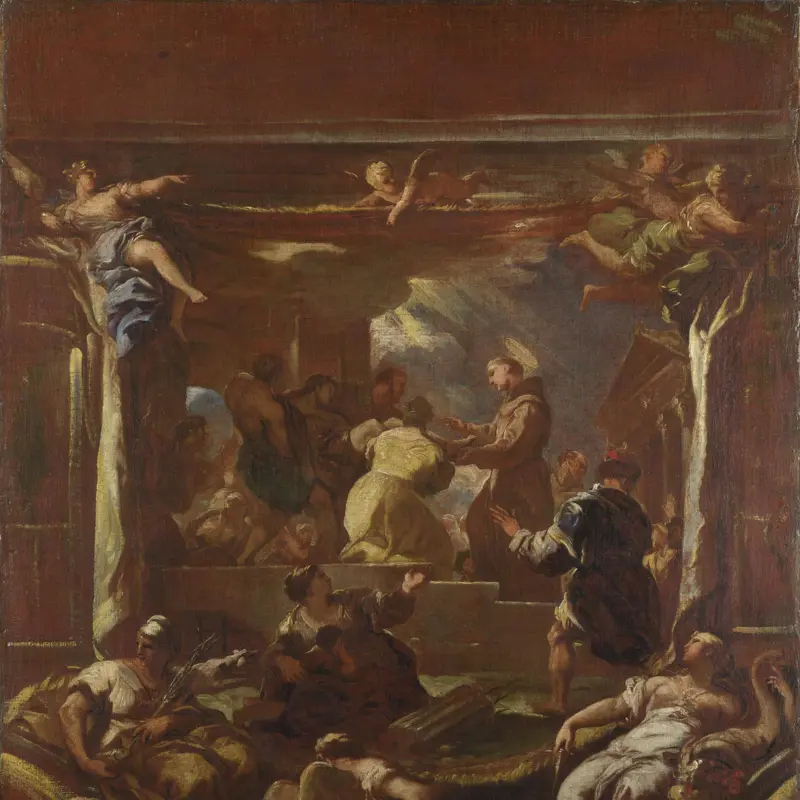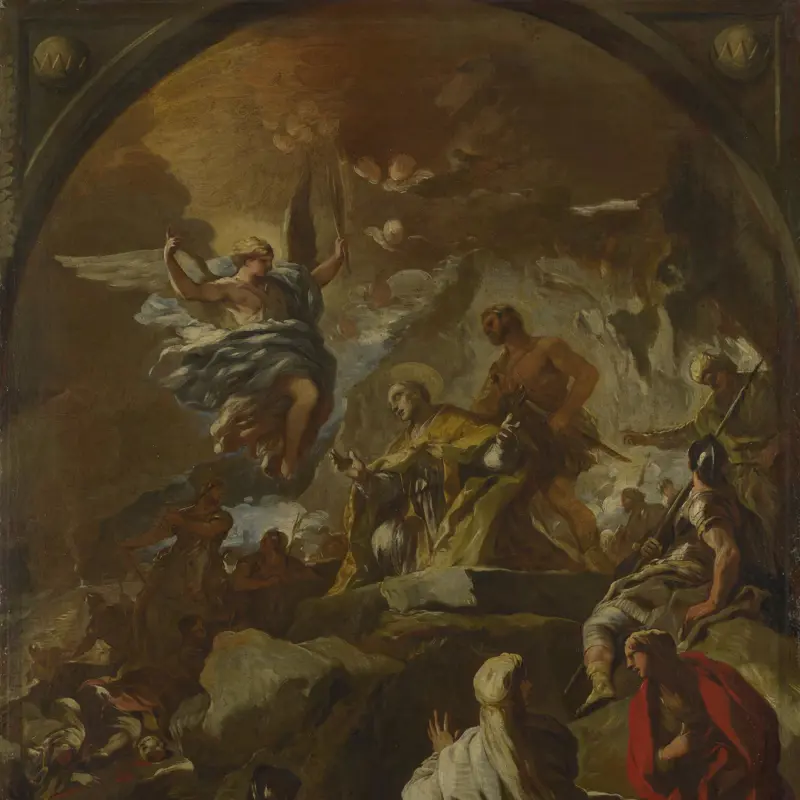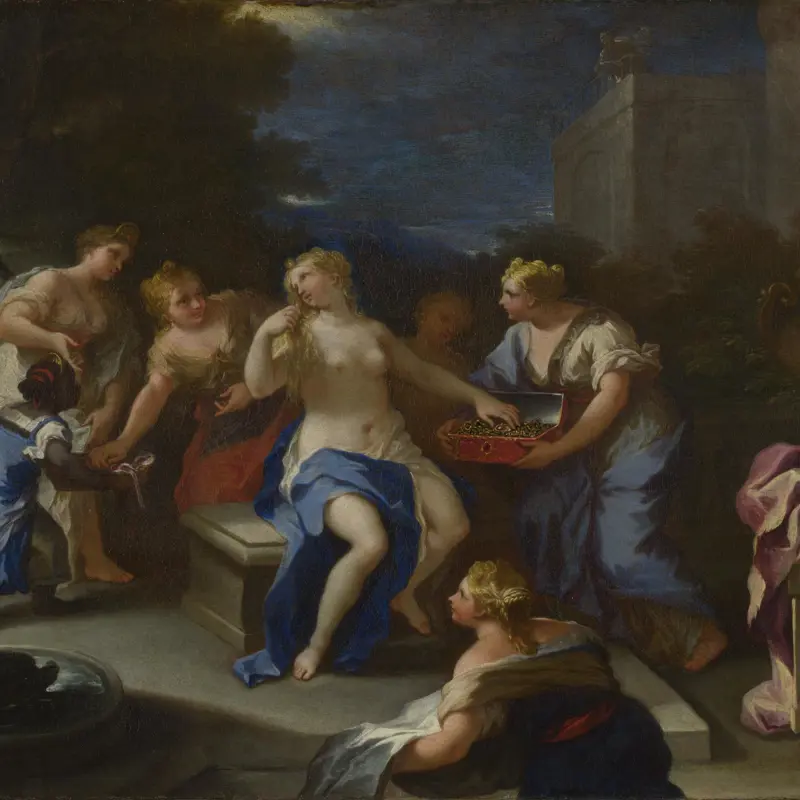Luca Giordano, 'Apotheosis of the Medici', early 1680s
About the work
Overview
This modello, or detailed oil study, is one of a group of 12 that Giordano made in preparation for the ceiling frescoes in the Palazzo Medici Riccardi in 1682–85. Ten of the modelli are in the National Gallery’s collection, and this one corresponds to the group in the centre of the ceiling of the grand Galleria. It constitutes the climax of the decorative scheme, presenting the Medici family as paradigms of virtue.
The predominant figure, surrounded by radiant light, is Jupiter, king of the gods, supported by figures representing Glory and Wisdom. The bearded figure below him is Cosimo I de’ Medici (1519–1574), who had become the first Grand Duke of Tuscany over a century earlier. In the final fresco Giordano changed the central figures to include portraits of four more members of the Medici family, giving them the attributes of the Cardinal Virtues. At the bottom of the modello is Apollo, god of the sun, riding his chariot through the sky; at the top is the chariot of the moon, drawn by bulls.
Key facts
Details
- Full title
- Apotheosis of the Medici
- Artist
- Luca Giordano
- Artist dates
- 1634 - 1705
- Part of the series
- Modelli for the Palazzo Medici Riccardi, Florence
- Date made
- Early 1680s
- Medium and support
- Oil on canvas
- Dimensions
- 139 × 65.2 cm
- Acquisition credit
- Presented by the Trustees of Sir Denis Mahon's Charitable Trust through the Art Fund, 2013
- Inventory number
- NG6636
- Location
- Not on display
- Collection
- Main Collection
- Frame
- 17th-century Italian Frame
Provenance
Additional information
Text extracted from the ‘Provenance’ section of the catalogue entry in Gabriele Finaldi and Michael Kitson, ‘Discovering the Italian Baroque: The Denis Mahon Collection’ (exh. cat. National Gallery, London, 1997), London 1997 and supplemented by the National Gallery’s Annual Report, ‘The National Gallery: Review of the Year, April 2012 – March 2013’; for further information, see the full catalogue entry.
Exhibition history
-
2023Luca Giordano: Maestro barocco a FirenzePalazzo Medici Riccardi30 March 2023 - 5 September 2023
Bibliography
-
2001
C. Baker and T. Henry, The National Gallery: Complete Illustrated Catalogue, London 2001
-
2014National Gallery, The National Gallery: Review of the Year, April 2012 - March 2013, London 2014
About this record
If you know more about this work or have spotted an error, please contact us. Please note that exhibition histories are listed from 2009 onwards. Bibliographies may not be complete; more comprehensive information is available in the National Gallery Library.
Images
About the series: Modelli for the Palazzo Medici Riccardi, Florence
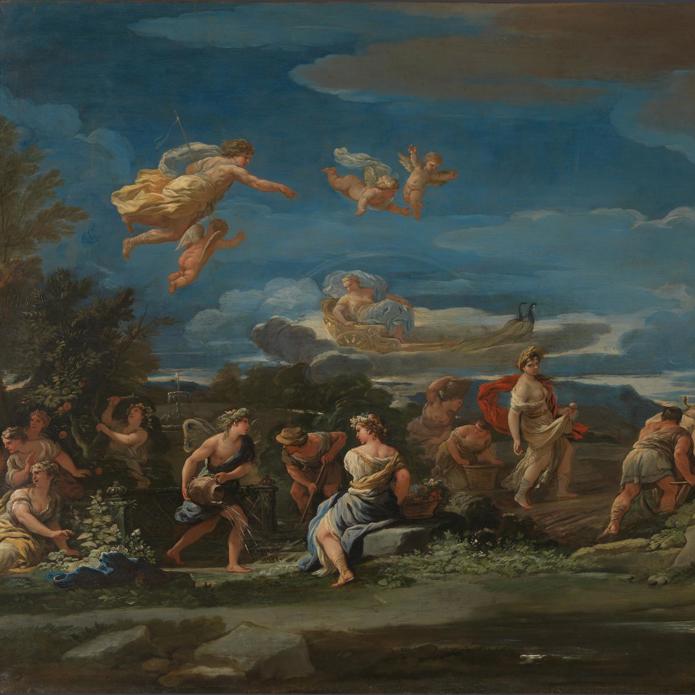
Overview
This group of ten paintings was made by Giordano as a series of detailed oil studies (or modelli) for the ceiling frescoes in the Palazzo Medici Riccardi in Florence, which are among the artist’s finest achievements. The modelli are part of a set of 12 (the other two are in private collections).
Nine of the paintings relate to the ceiling of the highly ornate Galleria, built to house a precious collection of antiquities and function as a public reception room. The other is associated with the ceiling of the adjacent Library. The overall theme in the Galleria is the elevation of mankind through Wisdom and Virtue, using allegorical and mythological figures to represent different strengths and traits. It culminates in a centrepiece which presents the wealthy Medici family as the paradigm of both these qualities.
Giordano seems to have worked up these modelli to clarify his designs and may have presented them to his client, the Marquess Francesco Riccardi, for approval before the frescoes were executed.

